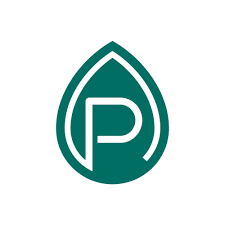What is Glutathione, and what is it used for
Glutathione (GSH) is considered the most powerful biologically produced antioxidant. This tripeptide molecule—made from the three amino acids cysteine, glycine, and glutamate—is produced by the liver and subsequently sent and stored in various organs, particularly in the lungs, brain, and blood cells.
Glutathione acts as a scavenger molecule against oxygen free radicals by maintaining the correct intracellular redox state. Specifically, Glutathione is involved in the redox of free radicals generated in the liver by the metabolism of toxic substances, including pharmaceuticals.
How does Glutathione act?
Its specific chemical composition gives Glutathione a high capacity to get oxidized or reduced, thus protecting proteins from the damaging action of free radicals (ROS). Glutathione, in fact, by giving up its hydrogen ion (H+), which acts as an acceptor of an electron (e-) coming from ROS molecules, is thus able to "neutralize" and make ROS harmless. Thanks to the enzyme Glutathione reductase, the oxidized Glutathione returns to its original form, regaining the hydrogen molecule and continuously self-regenerating to perform its functions.
A multi-tasking molecule: Glutathione properties
In addition to its powerful antioxidant activity, Glutathione is also known for its detoxifying, immune-modulating, and cytoprotective activities:
- Its antioxidant activity helps maintain a healthy immune system, which can be inhibited by high levels of oxidative stress;
- It supports the functionality of the mitochondria, intracellular organelles essential for energy production from the metabolism of dietary glucose, and protects their DNA.
- Furthermore, this molecule appears useful for regenerating vitamins C and E (both with antioxidant and anti-aging functions) and transporting harmful mercury molecules out of brain cells.
Because of its many characteristics and functions, this tripeptide can rightly be considered a “super-molecule”, essential for the functioning of our antioxidant and immune systems.
Glutathione deficiency: who might lack this precious molecule?
Various individuals can experience shortages of this crucial element, even though our body can typically synthesize it independently, primarily in the liver. This synthesis begins with the three amino acids constituting Glutathione (cysteine, glycine, and glutamate) combined with sulfur. The following are at risk of shortages:
- Patients with liver disease that could reduce the molecule’s ability to synthesize;
- Patients with chronic diseases, because conditions such as diabetes, rheumatoid arthritis, cardiovascular disease or neurodegenerative diseases can affect Glutathione levels in the body;
- People exposed to high amounts of free radicals, as harmful environmental factors such as air pollution, cigarette smoke, UV rays, and oxidative stress can reduce Glutathione levels in the body;
- Moreover, with aging, we all lose the ability to produce and maintain optimal levels of Glutathione: in elderly subjects, the decline in Glutathione levels could be due to different factors including a reduced intake of essential nutrients involved in the production of this molecule, decreased activity of enzymes involved in its synthesis, or an increase in aging-related oxidative stress.
Tips and remedies for Glutathione deficiency: lifestyles and food supplementation
What happens when our organism, perhaps challenged by unhealthy lifestyles and habits or due to our no longer young age, suffers an excessive decrease in Glutathione levels? We could easily incur health problems due to the reduced capacity to eliminate waste substances that accumulate in the liver; we could age more rapidly due to the reduced functionality of the antioxidant system in fighting ROS (free radicals); or we could be more susceptible to the attack of viruses and bacteria due to the weakening of our immune defenses.
Studies suggest that low Glutathione levels may be associated with debilitating conditions such as cardiovascular disease, diabetes, neurodegenerative and inflammatory diseases. In these cases, it is particularly relevant to adopt strategies that integrate different approaches to improve Glutathione levels in the body.
The nutritional approach consists of consuming food rich in Glutathione precursors such as cysteine, selenium, and sulfur—garlic, onion, peppers, broccoli, and cabbage, for example, are foods rich in cysteine—or also food supplements of Glutathione.
This approach should be associated with the environmental one, which consists of reducing exposure to toxic substances and choosing a healthy lifestyle: a balanced diet, regular and moderate physical activity, and continuous stress management.
As for supplementation, it is best to choose Glutathione in liposomal form, which is encapsulated in fatty components (usually phospholipids) that better preserve its structure and ensure the molecule's bioavailability at the organic level.





